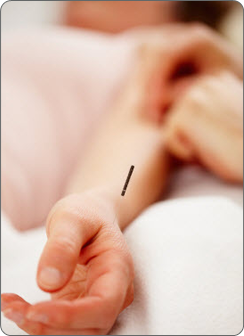A Holistic & Natural Approach to Your Healthcare
Over the past few decades, alternative health options to traditional medicine and medical care have generated quite a bit of interest and support from the general population. Called variously “alternative medicine,” “alternative health care,” “complementary medicine,” and “holistic medicine,” this life-affirming movement is anything but new; many (if not most) alternative approaches to health and wellness are hundreds or even thousands of years old.
Health care vs. Sick care

With the staggering rise of medical costs and the increasing prevalence of disease, especially in well-developed, industrialized nations such as the United States, people are waking up to the reality that the mainstream medical model may not be the best approach to ensuring health and wellness. While it is certainly true that there is much that Western medical science can do address disease – especially acute health issues – it’s equally important to consider the ways in which alternative health care models can help maintain well-being.
Here are some of the more common alternative health care therapies you might consider looking into:
1) Naturopathic Medicine
While it’s widely accepted, even in mainstream medical science, that all healing is self-healing performed by the body, naturopathic medicine in particular accepts and operates under this profound principle.
Naturopathic doctors (also called “naturopaths” and “NDs”) aid the body in its innate healing processes by using a variety of natural treatments tailored to each patient’s needs. Diet, lifestyle, work, environment, and personal history are all taken into consideration when approaching health and illness from a naturopathic perspective.
Unlike some other branches of alternative and complementary health care, naturopathic medicine can draw upon many different kinds of alternative approaches. Licensed NDs are taught to facilitate the body’s natural healing processes by using the least toxic therapies first; by treating the whole person (body, mind, and spirit) and not just the body; and by addressing the causes of disease, rather than just symptoms.
Within the scope of their practice, naturopathic physicians may employ a wide range of services including nutritional counseling, therapeutic herbalism, energy therapies, homeopathy, light therapy, therapeutic exercise, and other alternative health modalities.
2) Chiropractic
Being only 100 years old, chiropractic care is a relatively new system of therapy, yet many people are familiar with it, at least in name, and chiropractic care is now often covered by a good number of health insurance plans.
This branch of alternative medicine concerns itself foremost with the musculoskeletal system, guided by the theory that misalignment of the spinal cord contributes to ill health and disease states throughout the body. Some of the most common complaints that chiropractors respond to are neck and back pain, spasms, sprains, strains, headaches, carpal tunnel syndrome, tendonitis, and other issues caused by improper alignment of vertebrae, joints, and muscles.
Chiropractic treatment typically involves taking a complete medical history, a physical exam that includes joint and spine mobility, and then any number of manual maneuvers (called “adjustments”) such as rapid, mild thrusts to the spine or the slow, repeated movement of joints. Chiropractors may also utilize additional therapeutic techniques including energy work, muscle testing, and nutritional counseling.
3) Ayurveda

The homeopathic approach to disease treatment, which the current medical model certainly does not espouse, has a strong history of successful use. Used by hundreds of millions of people worldwide, the World Health Organization has even recommended that homeopathy should be integrated with conventional medicine throughout the world to provide adequate health care for all people.
5) Therapeutic Herbalism
Perhaps the oldest and most common approach to promoting health, the power of herbs has been used by cultures around the world throughout all of human history.
Today, as a result of the advancement of communication technology and the renewed interest in natural medicine that we see in society, practitioners of therapeutic herbalism have more collective knowledge about the health-promoting abilities of plants from around the world than ever before. Even science has discovered that the secret to human health may rest in the plant kingdom: almost 75% of synthetic medications prepared in laboratories by pharmaceutical companies are derived from plants.
Some of the most common preparations used by trained herbalists include encapsulated dried and powdered herbs, teas, tinctures, salves, extracts, and essential oils. Of course, just because herbs are natural does not mean that they are always benign. As with any medication or therapeutic agent, there are certain contraindications for herbal remedies.
For example, there are some herbs that pregnant women should not take, as well as those that may negatively affect people with preexisting kidney, heart, or liver problems. This means that, while using herbs therapeutically may certainly be a powerful and health-promoting approach, it should only be done under the care of a trained herbalist.
6) Traditional Chinese Medicine

Dried herbs used in Traditional Chinese Medicine, including Ginseng at center.
Working with a TCM practitioner is a very unique and person-specific experience; no two people are treated the same way. Diagnosis of stagnant qi or its resulting illness may be accomplished by measuring the pulse, by an examination of the tongue, by smelling the body, and by other approaches not used in Western medicine.
Resulting treatment options may vary widely including acupuncture, acupressure, massage, movement exercises (such as Qigong and Tai chi), dietary changes, meditation, or any combination of these and other therapies. Because it is a system of medicine unto itself, any and all health conditions can be addressed by TCM, though it is important to work with a qualified practitioner to achieve desired results.
7) Acupuncture

As a healing therapy, acupuncture has been practiced for over 3,000 years. Most people are aware that acupuncture entails the use of needles, though people who have not experienced the treatment misunderstand and, therefore, naively fear it.
In truth, the needles used in acupuncture are very fine and when inserted, often cannot be felt. The needles are applied to very specific parts of the body which are known access points to qi’s circulatory system; acupuncture effectively redirects the flow of qi when it is blocked or stagnant, resulting in the prevention of illness and the renewed ability of the body to heal itself. Sessions tend to last between 10-30 minutes, during which the patient typically lies down or sits in a relaxed position.
To many first-timers’ surprise, acupuncture often produces deep relaxation; many patients fall asleep during treatment.
8) Nutrition Therapy
It’s very common for practitioners of alternative health therapies to address a client’s dietary patterns and nutritional status, and with good reason: because your body is quite literally made from the foods you eat, an unhealthy diet tends to result in an unhealthy body.
Restoring health can often result when nutritious, whole foods are introduced into the daily diet. At the same time, following the Standard American Diet can make it difficult to get vital nutrients in amounts necessary to promote optimal wellness; even the National Institutes of Health Office of Dietary Supplements suggests that “If you don't eat a nutritious variety of foods, some supplements might help you get adequate amounts of essential nutrients.” As a result, nutrition therapy often involves a close examination of the dietary and nutritional supplements that would benefit a patient, as well as the ways in which diet and lifestyle affect health.
The U.S. Department of Agriculture has found that a significant proportion of the U.S. population receives well under 70-80% of the Recommended Dietary Allowance (RDA) for several essential vitamins and minerals. This is a startling statistic made more alarming by the fact that the RDAs were not established to promote optimal health, but as a benchmark for keeping deficiency diseases at bay.
Practitioners of nutrition therapy, therefore, work with clients in several ways:
- First, diet and lifestyle are addressed to determine where particular weaknesses may be contributing to ill health.
- Improvements are suggested, often in tandem with education to help clients understand the importance of selecting high-quality, nutrient-dense foods and drinks.
- Assessments may be completed to determine specific nutrient deficiencies, and nutritional supplements may be recommended.
Nutrition therapy can be powerful when properly implemented, and clients who put their best foot forward and learn how to take better care of themselves can lead renewed lives, empowered with what they have learned and experienced.
Conclusion
These are only some of the many different alternative health care approaches and therapies that are widely available today. While mainstream medical science may not agree with the theories or practices noted above, it remains important to many who value their health freedom that we have the ability to seek out and engage in such health-related therapies.
As with any health-related activity, you should only accept the services of health providers who have been sufficiently trained and are practicing legally where you live. Once these conditions are met, working with a qualified, professional alternative health care practitioner may be the best way for you to achieve vibrant health and optimal well-being.
1 Case, S. (2010). Health care or sick care: What are we reforming? The Case Foundation. Retrieved from http://www.casefoundation.org/blog/health-care-or-sick-care-what-are-we-reforming
2 Goldberg, B. (2002). Naturopathic Medicine, Alternative Medicine: The Definitive Guide (2nd ed.). Berkeley, CA: Celestial Arts.
3 Ayurveda. (1999). The Complete Guide to Natural Medicine. International Masters Publishers, Inc. 13:8.
4 Herbal Medicine. (1999). The Complete Guide to Natural Medicine. International Masters Publishers, Inc. 13:13.
5 Traditional Chinese Medicine. (1999). The Complete Guide to Natural Medicine. International Masters Publishers, Inc. 13:10.
6 Acupuncture. (1999). Traditional Chinese Medicine. (1999). The Complete Guide to Natural Medicine. International Masters Publishers, Inc. 13:5.
7 Dietary Supplements: What You Need to Know. (2011). National Institutes of Health Office of Dietary Supplements. Retrieved September 28, 2011 from http://ods.od.nih.gov/HealthInformation/DS_WhatYouNeedToKnow.aspx
8 The Healthy Eating Index (1995). USDA Center for Nutrition Policy and Promotion (CNPP). Retrieved September 28, 2011 from http://www.cnpp.usda.gov/publications/hei/HEi89-90report.pdf.
9 Holford, P. (2004). The Optimum Nutrition Bible (Revised ed.). Berkeley, CA: The Crossing Press.

